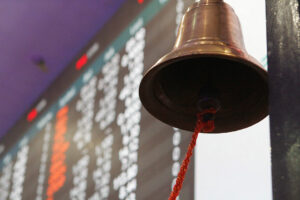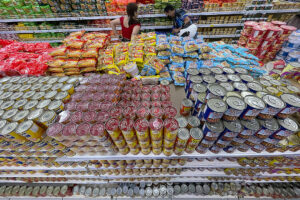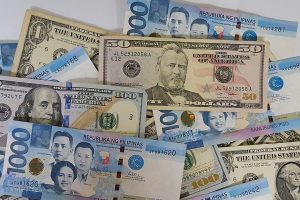Tristan C. Solinap, 23, juggles three jobs to keep up with his financial needs.
The young professional works as a program manager for public engagement in a local nongovernmental organization (NGO), a creative strategist for an Australian ad agency and a contractual documentation specialist for an international NGO.
 Relying on a single paycheck, he said, was never enough.
Relying on a single paycheck, he said, was never enough.
“Before I got my side jobs, I was living paycheck to paycheck, budgeting every week just to get by,” he told BusinessWorld in a Zoom interview. “After paying the bills, I would have to think twice about whether I could even afford a simple fastfood meal.”
Now, with three jobs, his monthly income has jumped to P70,000 from P20,000, letting him put away savings and make small investments.
“Polyworking,” the practice of holding multiple jobs at once, has become more visible in recent years, especially among younger workers.
Forbes describes it as a “growing trend” in which employees manage several careers instead of sticking to one. Labor Secretary Bienvenido E. Laguesma in a Viber message said the concept might sound new but is essentially the same as what used to be called multiple job holding.
As a polyworker, Mr. Solinap carefully divides his time between his overlapping roles.
His day begins at 9 in the morning, when he tackles tasks for the ad agency. “Since my ad agency job is a production, it’s more time-bound. I have to meet deadlines everyday,” he said.
The local NGO job, which follows an output-based schedule, gets most of his attention in the afternoons and evenings. “Not much happens in the morning. Our meetings usually start in the afternoon, and if we need to report to the office, it’s typically around lunch or later,” he said.
Balancing two demanding jobs is possible, he said, because one requires more fieldwork while the other is purely online. Meanwhile, his project-based part-time job only needs him to submit reports every few months.
The Philippines’ underemployment rate — employees wanting longer working hours or more jobs — eased to 11.4% in June from 13.1% in May and 12.1% a year earlier, according to the local statistics agency. This translated to 5.76 million Filipinos looking for more jobs or longer working hours in June.
Side hustles on the rise
Polyworking has gained traction worldwide as workers seek flexibility and supplemental income.
The 2024 Gen Z and Millennial Survey Report by business consulting firm Deloitte Touche Tohmatsu Ltd. found that 45% of Gen Zs have at least one part-time or full-time side job. These range from selling products and offering online services to gig work, retail jobs, consulting and even running small businesses.
The report noted that financial stability is the key driver for multiple job holding, though other factors such as monetizing hobbies, developing skills and contributing to communities also play a role.
In the Philippines, there is still little data on polywork, though part-time work is legally recognized. “Generally, the contract of employment or work arrangement governs the rights and obligations of the employee and the employer,” Mr. Laguesma told BusinessWorld.
Complaints, he added, could be addressed through administrative proceedings or the courts if violations arise.
For many young workers, financial need is the strongest motivator for juggling jobs.
Twenty-four-year-old Pola C. Basaya balances two full-time roles: one as a global solution coordinator for an international company and another as a web development coordinator for a local firm.
“With the economy in the Philippines, prices are just too high,” she said. “It’s hard to keep up if you don’t have a high-paying job.”
Her combined income of about P50,000 a month now supports the lifestyle she wants. “Of course, I have needs. I need to buy things, I need to go out — I have to sustain that as well.”
Labor group Bukluran ng Manggagawang Pilipino (BMP) blames low wages and contractualization for the rise of polyworking among the youth.
Young workers are more vulnerable to becoming polyworkers due to low wages and contractualization, BMP National President Renecio S. Espiritu, Jr. said in a Viber message.
“Obviously, the young generation will suffer from polywork because centuries of traditional politics and dynastic rule pauperized workers and institutionalized starvation wages and contractualization,” he added.
He cited the surge in app-based gigs like Grab, Lalamove and Angkas as proof that many are forced to take on multiple jobs just to get by.
Data from the Philippine Statistics Authority’s 2022 Occupational Wages Survey showed that the average monthly salary in the country stood at P18,423. Meanwhile, global consulting firm Mercer projected a 5.5% rise in average salaries for 2025 — an increase that labor groups say will still fall short of addressing workers’ needs amid inflation.
Not all polyworkers are motivated purely by financial concerns. Some seek personal fulfillment or more career opportunities.
“A worker may want diverse types of work to avoid monotony, or maybe for personal satisfaction if the other job relates to a hobby or matter of personal interest,” Mr. Laguesma said.
The Deloitte survey found that 86% of Gen Z workers think having a sense of purpose is crucial to job satisfaction and well-being.
For Mr. Solinap, his side jobs provide a creative outlet. “I studied communications in college,” he said. “With my second job, I now have an avenue to express my passion for writing and producing content.”
The hidden costs
But polyworking comes at a price. Long work hours often take a toll on physical and mental health. “The downside will be prolonged work hours resulting in negative health effects and the quality of family life might also be affected,” Mr. Laguesma said.
Ms. Basaya’s biggest challenge is lack of sleep. “Sometimes, I know my body needs more rest, but I just can’t do it because I’m required to report to work or deliver outputs,” she said.
She admits becoming irritable from fatigue. Spending more than 10 hours a day in front of a laptop has also affected her body, prompting her to take short breaks to get sunlight or run errands.
“I’m lucky because both of my companies are not strict with work hours,” she said. “Whenever I need to run errands or exercise, I just inform my teammates that I’ll be logging off at a certain hour.”
Mr. Solinap, meanwhile, experiences burnout from time to time. “A lot of things are happening every day and sometimes I just want to be isolated and be away from people even just for a while,” he said.
Although he works to support himself, he admits that having several jobs compromises his self-care. “The most glaring impact is on my mental health. Most of the time I just want to lie in bed, lock my door and shut my windows.”
Labor groups warn that the normalization of polyworking reflects systemic neglect of workers’ welfare.
Polywork itself is unhealthy, and its proliferation in the Philippines is a sign that the government doesn’t care about the welfare of workers, Mr. Espiritu said. “What workers demand is a living wage and security of tenure, not multiple jobs to cope with inflation.”
He added that many companies in the country operate under “backward and feudal” practices, preferring to keep wages low to maximize profits rather than sharing productivity gains with employees.
For him, the real solution is investing in agriculture and manufacturing while institutionalizing living wages and job security. That will ensure full and dignified employment, he added.
Despite the drawbacks, young Filipinos like Mr. Solinap and Ms. Basaya continue to embrace polyworking as a practical way to survive — and even thrive — in today’s economy.
For them, multiple jobs mean freedom from financial anxiety, but also new challenges in health and work-life balance.
“I can now have my own savings and small investments,” Mr. Solinap said. “But the tradeoff is steep.”
Most days, he finds himself exhausted, burned out and struggling to take care of his mental health.
For Ms. Basaya, the challenge is more physical — managing long hours and sleepless nights. Yet both remain committed to polyworking, at least for now.
Their stories reflect a larger reality: for many young workers in the Philippines, one job simply isn’t enough. — Almira Louise S. Martinez, Reporter







 DOWNLOAD
DOWNLOAD














